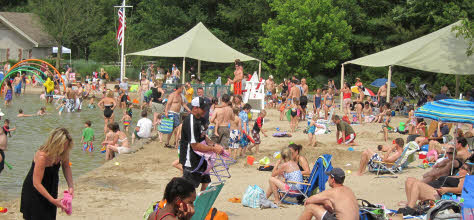
By Hayley Donahue, DVM
As the summer approaches, owners need to consider management practices needed to help their horses get through the hot weather. It is important to understand the normal physiology of the horse when exercised in hot or humid weather. During exercise the body generates heat faster than at rest. A large percentage of the stored energy used by the body during physical activity is converted to heat rather than motion. The more strenuous the activity the more body heat is generated. Additional heat generated during exercise results in an elevation of core body temperature from resting values (range, 99-100 F) to an excess of 102-106°F. The horse’s body attempts to cool itself by dissipating excess heat via sweating. In response to exercise, sweat glands are triggered to produce sweat. The subsequent evaporation of sweat carries heat from the body and helps to lower body temperature to a safe range. An important point to remember is that high humidity decreases the sweat evaporation rate, therefore slowing the cooling process. This is especially important in the heat and humidity of the summer. High temperatures and humidity decrease the horse’s ability to cool. If the rate of body temperature cooling is not satisfactory to match the ambient conditions, heat stress can develop.
Continue reading Summer’s Coming: Hot Weather Care for Horses











